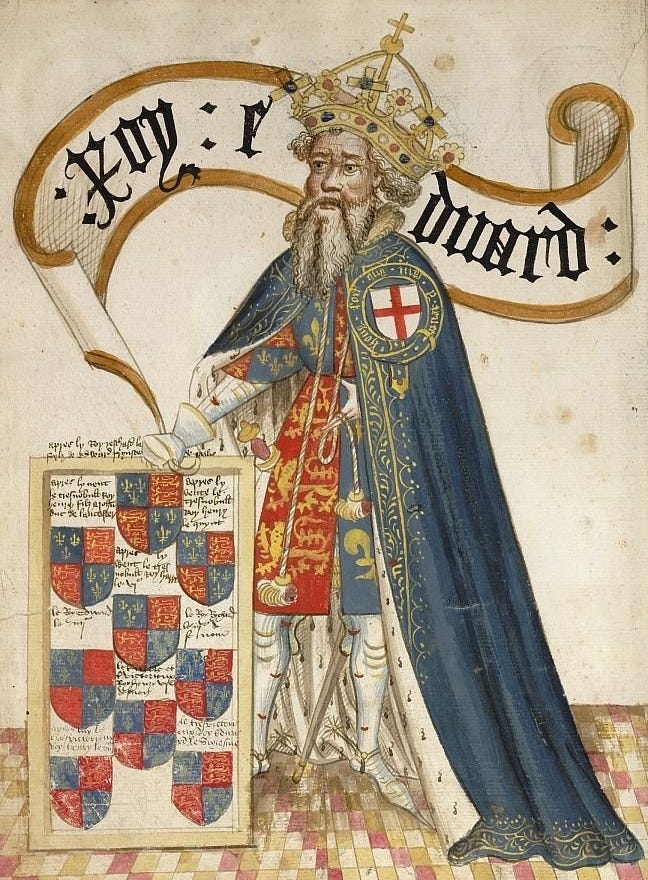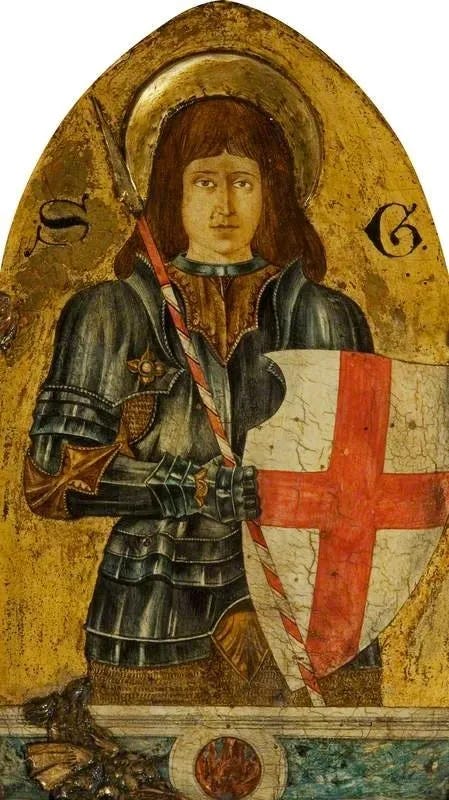The 23rd of April has been traditionally celebrated as Saint George’s Day since April 1348 and the establishment of the Order of the Garter by Edward III.

The Order of the Garter was not an entirely original construction. It’s roots were in an earlier idea of Edward III’s known as the Order of the Round Table, a secular chivalric institution celebrated by Edward III and his knights since 1344. By 1348 the Order of the Round Table which, you guessed it, was meant to emulate King Arthur, was replaced by a slicker device, the Order of the Garter — bound by the emblem of a blue garter that was worn by all its members — an ensemble of royalty (including some women) and knights of the realm. A band of brothers in arms, chivalric heroes and pious observers of religious law, this elitist order was spiritually overseen by the iconic soldier saint of England, Saint George. Yet… Saint George was not English. Far from it.
In hagiography — the record of saints’ lives — Saint George is the most revered of all military saints. A Cappadocian Greek (or possibly Iranian) turned Roman guard, Saint George was martyred as a hero for refusing to recant his Christian faith in the fourth century AD.




